Capability, Competency and Skills Resources
Capability, Competency and Skills defined
Capability, competency and skills describe three connected but distinct dimensions of workforce performance. Capability is the foundation — the knowledge, qualifications, certifications and experience a person brings to a role. These elements indicate potential and role readiness, but they do not in themselves demonstrate performance.
Competency is the application of that capability in context — the behaviours, applied knowledge and practical skills that show how effectively a person performs real work tasks. Competency reflects demonstrated proficiency, not inferred ability.
Skills sit within competency as the task-level abilities that support accurate, safe and efficient performance. They are often trained and verified through demonstration or testing.
Together, capability, competency and skills provide a complete view of potential, performance and task execution. A clear framework that links these elements to job roles enables organisations to define expectations, assess proficiency and plan targeted development across all functions and levels.
Why the distinction matters
Many organisations treat training completion, qualifications or years of experience as proof of competence. Yet credentials, courses and experience only indicate capability — the potential to perform. They cannot confirm whether an individual can apply their knowledge and skills accurately, safely and consistently in real working conditions.
This gap between capability and demonstrated competency is where most operational risk, quality issues and audit failures originate. Someone may be qualified, but not yet competent; trained, but not able to apply the required skills in context; experienced, but inconsistent in performance.
When capability, competency and skills are clearly defined and linked to job roles, organisations gain accurate insight into how people actually perform. Managers can distinguish between qualified and competent, identify genuine skill gaps, make evidence-based development decisions, and ensure staff are prepared for both current tasks and evolving role expectations.
Common problems
Competency frameworks are often static — detailed documents stored separately from day-to-day operations, hard to update, and disconnected from learning, performance and audit systems. Training records may show attendance or completion, but rarely provide evidence of proficiency or consistent application of skills.
Without a single structure linking job roles, capability requirements, competency indicators and task-level skills, organisations face:
- fragmented or duplicated data across HR, LMS, quality and audit systems
- inconsistent standards between teams, sites or business units
- limited visibility into who is genuinely competent to perform critical tasks
- difficulty demonstrating competence during regulatory or clinical audits
These gaps are where performance variation, risk exposure and compliance issues most often emerge.
What the right approach delivers
When capability, competency and skills data are managed together in a single system, clarity replaces complexity. One live framework links job roles to capability requirements, competency indicators, task-level skills, learning resources and development plans — giving leaders and staff a consistent, unified view of performance expectations.
This integrated approach delivers tangible outcomes:
- Clarity of expectations — people understand what is required and what “good” looks like in their role.
- Consistency in performance — shared standards reduce variability across teams and locations.
- Stronger compliance — regulated industries can demonstrate verified competence and alignment to standards.
- Targeted development — real skill and competency gaps guide focused learning and measurable improvement.
- Better mobility and succession — validated competence supports fair, transparent internal movement and advancement.
Together, these benefits create a continuous cycle of improvement — where capability is visible, competency is verified, and workforce development is aligned with organisational goals.
The foundation: a single source of truth
All of this depends on maintaining one authoritative system for roles, capability requirements, skills and verified evidence of competency. A genuine single source of truth removes the confusion caused by scattered spreadsheets, inconsistent documents and disconnected HR or training tools.
Centranum provides a unified data model that connects job roles, capability requirements, competency indicators, assessments and development progress. This ensures that everyone — from clinical educators and technical supervisors to auditors and line managers — is working from the same verified, up-to-date information.
For a deeper look at how this works in practice, see Single Source of Truth for Roles and Skills
.
About these resources
This collection brings together Centranum’s guides, templates and research for building, integrating and operationalising capability, competency and skills frameworks. Resources include step-by-step methods for creating competency libraries, mapping requirements to job roles, defining proficiency levels, assessing task-level skills and linking learning to real capability gaps.
You’ll also find briefings on framework maturity, AI-assisted model generation, skills-based planning and evaluating the impact of capability and competency initiatives. Together, these resources show how to move from static documents to structured, measurable capability and competency data that can be used across performance, development, workforce planning and succession.
Capability and Competency Management Resources
Below you will find a collection of evidence based, detailed capability, competency and skills management resources covering all aspects. Click on the links to explore.
Featured : The Skills Based Enterprise
Explore our latest resources on how organizations move from job-based structures to skills-driven capability systems — integrating verified competencies, workforce data, and responsible AI.
What is a Skills-Based Organization

How skills, competencies, and capability data connect strategy, agility, and workforce transformation. Read More
The Skills Based Workforce

Practical steps to build a verified, capability-led workforce with clear data governance. Read More
AI in Competency Management

Practical steps to build a verified, capability-led workforce with clear data governance. Read More
Core Concepts & Frameworks
Explore the foundations of capability, competency, and the emerging field of skills intelligence — frameworks that connect what people know, can do, and are ready to learn.
Capability-Competency-Skills
What’s the Difference?
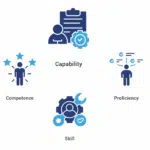
A clear, practical guide to the three layers of workforce capability. Learn how capability requirements, competency indicators and skills mapping fit together, and how to apply the model across job architecture, assessment, performance and development.
Capability-Competency-Skills - Integrated model for 2026
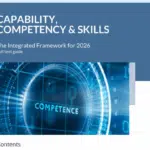
A simple model for capability, skills and competency. How skills fit inside competency (and when to verify separately). Practical examples. Guidance on indicators, proficiency levels and evidence. A checklist to assess your current framework
Capability vs Competency - How they differ and when to use each.
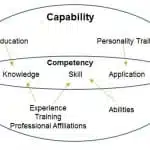
Capability describes potential and readiness; competency proves it through performance. This explainer shows how capability infers what people should be able to do, while competency confirms what they actually demonstrate on the job. Learn why managing both gives organizations evidence-based assurance, supports targeted development, and prevents gaps between qualifications and real capability.
Understanding Organizational Capability

Organizational capability is the collective capacity of a workforce to achieve strategic objectives. This guide explains how capability differs from competency, how to align it with organizational goals, and how to measure readiness through verified data — linking qualifications, experience, and performance evidence. Use it to build visibility, agility, and confidence in workforce planning and development.
Role & Capability Frameworks
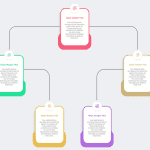
Role and Capability Frameworks provide a structured way to define job roles, map required capabilities, and align skills with strategy. Learn how they clarify expectations, support consistent assessments, and create clear career pathways. Includes practical examples from manufacturing, healthcare, and technology to show how frameworks link capability with performance and development across industries.
The A-Z Glossary of Competency Management

An A–Z guide to Competency Management terminology — from Abilities to Zoom-in Analytics. Use it to understand the language of capability frameworks, assessments, and performance systems. The glossary helps HR, Operations, and Compliance teams apply consistent definitions and avoid confusion when building or auditing competency models.
What is a Competency?

A competency combines knowledge, skills, and behaviors demonstrated in real work contexts. This overview explains how competency concepts evolved, the different types used in practice, and how they standardize language across roles, assessments, and development plans. Learn what makes a competency valid, and how to start building frameworks that drive consistency and accountability.
What is a Core Competency

Explore the origins and examples of core competencies — the universal behaviors that express your organization’s values, such as communication, collaboration, and ethics. Learn how to define and apply them in recruitment and performance management to promote “living the values.” Includes research-based context from Industrial and Organizational Psychology on Citizenship Behaviors.
Competence or Competency

Are competence and competency the same thing? Not exactly. Competence is meeting a required standard; competency describes the underlying knowledge and behaviors that achieve it. This explainer clarifies how to use each term correctly in policies, audits, and frameworks — and why both matter for accurate evaluation and workforce assurance.
Competency versus Performance
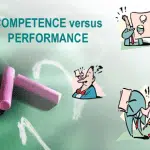
Competency focuses on the behaviors and inputs that lead to results; performance measures the outcomes. This guide explains how to balance the two in reviews, goal-setting, and calibration. Learn how to recognize strong performance that’s sustainable and aligned with role expectations — avoiding bias toward short-term results over lasting capability.
Certification versus Competency
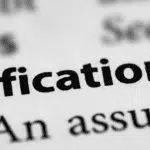
Certifications confirm course completion; competencies confirm capability in real work. This article explains why credentials don’t always guarantee competence, and when both are needed — especially in compliance or safety-critical environments. Learn how to pair certifications with competency assessment to verify current, context-specific ability, including examples from clinical settings.
What are Proficiency Levels

Proficiency levels define how capability develops from beginner to expert. This resource explains why they matter, common level schemes, and how to apply them in job design, assessments, and career planning. Learn how proficiency scales clarify expectations, support fair evaluation, and help visualize growth across technical and professional pathways.
What is Competency Management

Competency Management is the discipline of defining, assessing, and developing workforce capability across roles. This overview covers why it matters, the steps involved, and how software systems support version control, governance, and analytics. See how competency management underpins hiring, onboarding, development planning, performance, and succession for measurable talent outcomes.
What is a Skills-Based Organization

What it means and why the shift from traditional organizational foundations is happening today. Explore how skills, competencies, and capability data align to strategy, agility, and workforce transformation in a true skills-based organization.
Examples & Applications
See how organizations apply competency models, skills analytics, and capability mapping across roles and industries
Job Families
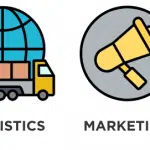
Job Families group related roles that share common capabilities, responsibilities, and career paths. This resource explains what job families are, why they matter, and who should manage them. Learn when to define or review your job family structure, which types are most common, and how to manage them in Centranum. Includes a downloadable Job Family Framework Template to help you standardize role structures and career pathways.
Core Competency Examples
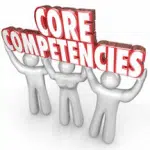
A curated, evidence-based set of core competencies drawn from organizational psychology. Includes example definitions with sub-headings and indicators for teamwork, service, conscientiousness, and organizational support. Use them as a starting point to tailor your framework to culture, values, and risk profile. Research links these competencies to stronger team coordination, commitment, and overall organizational effectiveness.
How to Use Core Competencies to Shape Organizational Culture

Organizational culture defines how work is done — the shared behaviors that express values and priorities. This resource shows how core competencies can reinforce culture by linking desired behaviors to performance and recognition systems. Explore research-based behavioral competencies, learn the five key steps to defining and refining them, and see examples of how organizations use core competencies to promote ethics, collaboration, and accountability.
Critical Thinking Competency
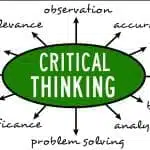
Critical thinking is a universal core competency for complex decision-making. Learn the six elements defined by cognitive psychologists—interpretation, analysis, evaluation, reasoning, self-reflection, and explanation—with observable indicators for each. Includes practical descriptions you can adapt across proficiency levels or job families.
Skills for AI Readiness

Fewer than half of organizations believe their workforce has the skills to make AI investments succeed. This resource identifies both the technical and core skills needed for AI adoption, and outlines practical steps to build readiness across functions. Learn how capability mapping and targeted development plans can bridge the gap between current skills and AI-enabled performance.
AI skills for IT teams

AI readiness for IT requires specialized domains such as data engineering, MLOps, cloud architecture, analytics, AI agent development, and governance. This guide outlines the essential technical and compliance skills, when to hire versus develop, and how to assess readiness. Includes a downloadable checklist and detailed 17 page guide on AI skill requirements for IT teams.
Skills-Based Hiring

Skills-based hiring focuses on verified capability rather than formal credentials. This resource explains the global skills-first shift, why it’s growing, and how competency management enables it. Learn who benefits, when to apply it, and how to embed skills evidence into recruiting and internal mobility decisions. Includes the Skills-Based Hiring Readiness Toolkit — a practical checklist, sample scenario, and pilot plan.
Skills Gap Analysis

A step-by-step guide to identifying and closing workforce skill gaps. Learn what distinguishes Skills Gap Analysis from Training Needs Analysis, why it matters in AI-driven workplaces, and how to interpret assessment data for targeted development. Includes tools for assessing readiness, analyzing gaps, and prioritizing interventions. Download the Skills Gap Analysis Checklist to run a structured, repeatable analysis with confidence.
Are your Job descriptions working for you?
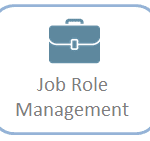
Your job descriptions are the foundation for the contract – legal and psychological you have with your staff. They need to reflect the reality of the role and be dynamic – updated as circumstances change. This is a checklist of what should be included and why.
Implementation & Best Practice
From AI-assisted skills models, competency frameworks and assessment to capability assurance in regulated sectors — proven methods for implementing integrated skills and competency systems.
Workforce Capability Management Guide (Download)

A practical guide to building and managing workforce capability frameworks. Learn how to define role requirements, link them to organizational strategy, and use capability data for assurance, planning, and development. This guide outlines the steps to assess, align, and continuously improve capability across your organization. Includes checklist of data needs.
Five Steps to Building a Skills-Competency-Capability Framework That Works
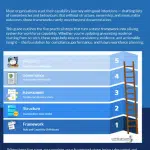
A practical guide to designing capability frameworks that deliver real business value. Learn the five proven steps for defining role requirements, linking capabilities to strategy, validating quality, and driving adoption across HR and operations. Includes examples of effective framework structures and maintenance tips.
Job Family Framework Template (Download)
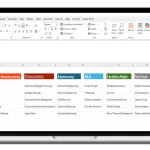
Use this ready-to-customize Job Family Framework Template to structure related roles, define capability groupings, and establish clear progression pathways. The template helps you standardize job family definitions, link them to capability profiles, and maintain alignment across business units. Ideal for organizations building or updating their capability frameworks.
Editable spreadsheet for quick implementation.
Job Analysis

Job analysis identifies the tasks, responsibilities, and requirements of each role , linking them to organizational strategy and forming the foundation for capability and competency frameworks. This guide explains how to conduct effective job analysis, capture both technical and behavioral requirements, and translate findings into capability profiles.
Use it to build accuracy and consistency into your framework from the start.
Deficient Role Descriptions – The Hidden Costs

Outdated or inconsistent role descriptions weaken workforce capability. This article explains how unclear roles lead to recruitment errors, performance gaps, and compliance risks — and how capability-based role design prevents them. Learn how to diagnose role description issues and replace them with measurable, framework-aligned definitions that support assurance and agility.
Building a Skills-Based Workforce

What a skills based workforce means and why it matters today. Learn the 7 steps to implement a verified, capability-led approach to workforce skills — from defining competencies to using AI responsibly and making evidence-based talent decisions.
Practical Guide to Competency Management
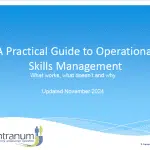
A concise introduction for organizations new to competency management. Explains the difference between competencies and capability, the purpose of competency models, and common implementation challenges. Learn what works, what doesn’t, and how to choose the right approach for your context. Downloadable starter guide.
Getting started with competency models

Explore Centranum’s competency libraries and AI tools for fast model creation. Learn how to extract competency requirements from job descriptions and experiment with our AI assistant to generate structured profiles. Includes links to design consultancy and supporting resources.
Competency Model Design Diagnostic
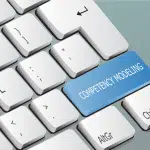
Designing a competency or skills model that fits your organization depends on role patterns, rating needs, and assurance requirements.
This quick 10-minute diagnostic helps you decide whether to use a flat, dimensioned, Knowledge/Skills/Application, or seniority-progression structure — and provides a ready-to-use model template
Building a Competency Model
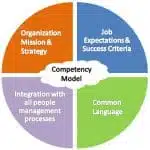
A competency model organizes knowledge, skills, and behaviors for roles, job families, or the enterprise. This guide explains model types (core, leadership, technical), key components, and validation. Learn who to involve, how to use AI responsibly, and how to connect models to assessment, learning, and succession so frameworks become operational—not academic.
AI Assisted Competency Modelling

Discover how Centranum’s AI assistant drafts indicators, maps competencies to roles, and suggests learning links—fast. This page explains safe use: data quality, bias checks, and human-in-the-loop validation. Updated guidance covers prompt libraries and approval workflows so AI accelerates experts without bypassing governance.
How to define a competency
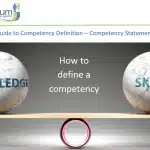
A detailed workbook for writing precise, observable competency statements. Includes a proven formula, examples of rating-response effects, and common errors to avoid. Use it to ensure clarity and comparability across all frameworks. Download
Competency Assessment – Overview

An introduction to structured competency evaluation—what it is, why it’s challenging, and how to avoid common pitfalls. Explains rating approaches, evidence requirements, and bias sources. Outlines Centranum’s supported methods.
Competency Assessment - Best Practices

Everything you need for valid, fair assessments: calibration, rating scales, timing, and gap analysis. Learn how to turn results into actionable development plans.
Avoiding bias in Assessment

Bias can distort even well-designed assessments. This article examines the cognitive roots of bias and practical mitigation techniques—structured evidence, multi-source review, and consistent indicators.
How to develop competency Models - Free Guide

An in-depth manual for setting up competency models—deciding on structure, measurement, and proficiency scales. Covers stakeholder roles, validation steps, and model maintenance.
Making Competencies work
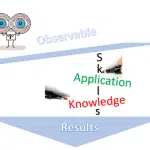
How to ensure your competency initiative is credible and effective. Learn how to set clear purpose, validate definitions, mitigate bias, and link assessment, learning, and career development. Includes performance-impact research and guidance on AI-enabled efficiency.
AI in Competency Management

Understand where AI can assist, and where human review is needed. What to automate, what to validate. Recognize the limitations of AI in competency management. How to govern AI use – with audit readiness and ethical assurance built in.
Business Case & Research
Discover evidence of the impact of capability and competency management, skills intelligence on innovation, performance, efficiency, and risk reduction across industries.
Skills-Competency - Capability and Risk Management: The Missing Link
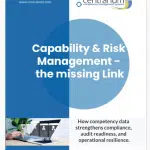
Many organizations manage risk through compliance but overlook workforce capability — a primary risk factor.
This briefing explains how capability data links to operational assurance and risk mitigation.
Learn the steps to identify critical capability gaps, integrate risk controls, and demonstrate compliance confidence.
The Business Case for a Competency-Capability System
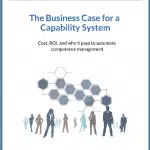
This briefing outlines why spreadsheets and fragmented tools can’t deliver the transparency or governance required for modern talent management.
Learn the measurable business benefits of an integrated capability system — including compliance assurance, productivity, and performance visibility.
Turning Frameworks into Measurable Capability (Competence)
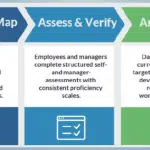
A brief guide to making capability frameworks operational — turning policy documents into actionable data.
Learn how to measure real workforce capability, track progress, and link insights to performance outcomes.
Includes case example and metrics showing how capability systems translate intent into measurable impact.
Skills-Competency-Capability Framework Maturity – From Framework to Insight.
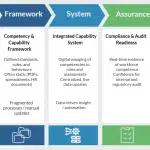
How organisations move from static frameworks to live capability data that drives performance, assurance, and workforce readiness. This page explains the typical stages of capability maturity and includes tools you can use to benchmark your progress.
Competency Management - the Business Case

Outlines the common challenges in implementing competency management systems and the key reasons they matter.
Explains how competency management underpins people strategy, improves decision-making, and reduces compliance risk.
Competency Management - Risk Impact

Job knowledge and skill are strong predictors of performance — and essential to risk control.
This article explains how competency management reduces operational, safety, and reputational risks by ensuring the right skills are verified and current.
Competency Management Costs & ROI

Reviews the real costs of manual competency tracking versus digital systems.
Outlines key investment components and shows how to calculate ROI for competency software.
A clear, evidence-based overview for decision-makers building the business case for automation.
Competency Management System excel ROI calculator tool

Use this Excel-based tool to estimate the cost of your current competency management activities and project ROI for system implementation.
Simply enter your existing costs and target improvements to see the potential savings and return over two years.
Competency and Organizational efficiency - the link

Defines organizational efficiency and its relationship to workforce competence.
Reviews global research on how capability impacts productivity and performance, and explains how competency management systems drive efficiency gains.
Includes practical strategies for improvement.
Skills Shortages Trends 2023-2025 - Research

Research insights from OECD, McKinsey, and World Economic Forum. Explore what drives today’s global skills shortages and how they’re evolving to 2030. Covers the main shortage types, regional trends, generative AI’s impact on skill demand, and evidence-based strategies to build workforce capability and resilience.
14 top Competency Management Software platforms – 2025 Review

Compare 14 leading competency and capability management systems — from healthcare specialists like Dossier and Kahuna to enterprise suites such as TalentGuard and Fuel50.
See how each platform handles frameworks, assessments, analytics, and audit readiness — Read the full comparison and buyer’s guide.
Related Solutions, Modules & Tools
Learn how Centranum’s integrated modules — Competency Library, Mapping, and Assessment & Analytics — connect to our full Competency Management solution.
See how these tools create a single source of truth for workforce capability and performance.
Turn capability data into actionable talent insight
Connect role, competency, and performance data in one place — and turn it into decisions that grow capability and careers.
FAQs
What’s the difference between capability and competency?
Capability is potential (qualifications, certifications, experience). Competency is demonstrated performance — applied skills and behaviours shown in real work.
Why align capability and competency to job roles?
Role alignment makes expectations explicit, enables fair assessment against clear indicators, supports compliance, and guides targeted development plans.
Do credentials prove competence?
No. Credentials show readiness to perform, not how well someone performs. Competence is evidenced through observed behaviours, assessments, and outcomes on the job.
How do we keep frameworks current without creating admin burden?
Use a central library with versioning and change logs, map to roles once, and automate reassessments and development plan updates when requirements change.
How do assessments connect to learning and development?
Assessment results highlight gaps; linked learning resources and development plans close those gaps, with progress tracked in the same system
Can this help with audits and regulatory reviews?
Yes. A single source of truth provides verifiable evidence of role requirements, assessed competence, and training/experience history — reducing audit effort and risk.
